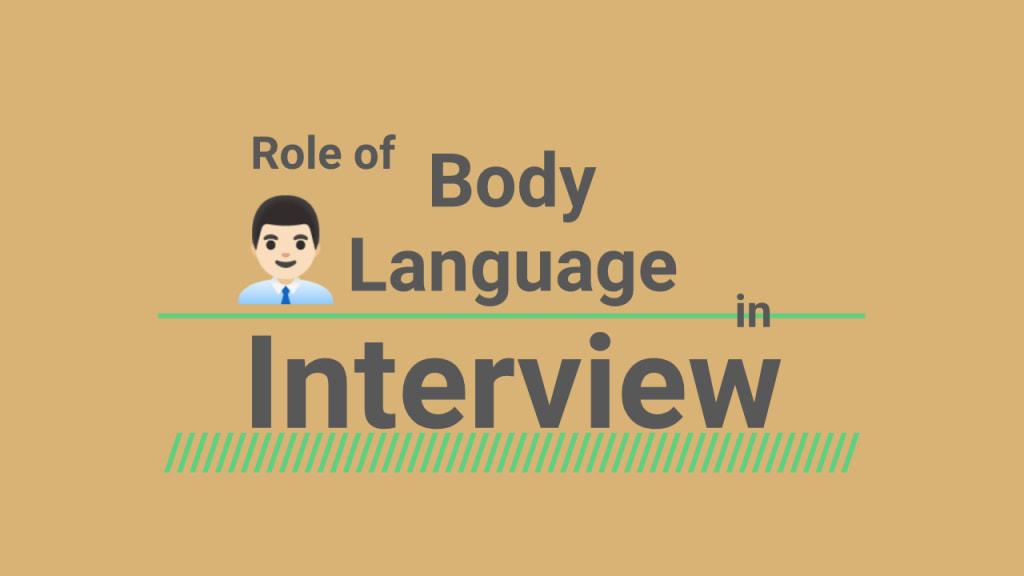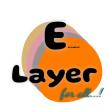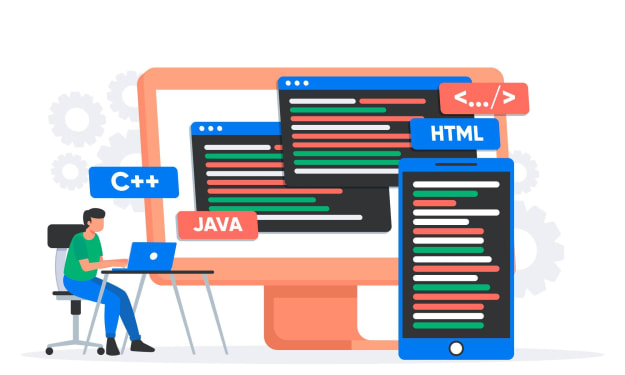Role of Body Language in Interview
The other way of communication without actually speaking

The other way of communication without actually speaking.
Non-verbal communication can play a huge role in helping HR managers to identify possible issues. Here are some tips on how to use your body language to make the best impression in an interview.
Another definition, Body language is a type of communication in which physical behaviors, as opposed to words, are used to express or convey the information. Such behavior includes facial expressions, body posture, gestures, eye movement, touch, and the use of space.
The main aspects of Body Language are:
* Facial Expression
* Eye contact
* Gestures
* Heads, Body shape, and postures
* Appearance
Watch your walk:
The way you make your way to the interview room says a lot about your demeanor or character.
Upright and confident with a quick stride means you are enthusiastic and confident about the interview.
If you are slow and hesitant, you are nervous, which is normal, but being too nervous might mean you aren’t convinced you can do the job as expected.
Portray yourself as upright and confident!
Maintain Bright Face:
The formation of your mouth is an indicator of your overall demeanor.
An upward mouth means you smile a lot.
A downward mouth means you frown a lot and a composed, straight mouth means you do both.
Keep your mouth upward at best or at least straight!
It reveals whether the candidate is confident, goal-oriented, and focused – or indeed, whether the candidate might actually be bored, insecure, or nervous.
Keep Clean and clear Posture:
Watching how you sit is another easy way to pick up on non-verbal communication in interviews. The sloucher lacks interest, whereas the percher is far too nervous.
The candidate who sits upright with head erect and still looks relaxed is the confident candidate who is totally comfortable with the interview (and most likely most sure of their abilities for the job).
The candidate that kicks back on their chair with their hands behind their head is quite disrespectful and may even be indicating they aren’t taking the interview seriously. And if the direction that those feet are pointing makes a sudden change towards the door, that means they just want to get out of there.
Sit upright with your head erect!
Handshaking:
The handshake has long been a signal used by HR professionals. Check out these telling signals:
A firm palm-to-palm handshake with eye contact and a sincere smile means confidence and honesty.
A limp handshake with no eye contact tends to indicate that the person lacks enthusiasm, and maybe passive and not people-oriented or introvert.
An aggressive handshake with tight squeezing shows an overly aggressive personality that lacks sensitivity. aggressive handshake with tight squeezing shows an overly aggressive personality that lacks sensitivity.
A crazy pumping handshake conveys insecurity. A hand-over-hand handshake is too familiar — and therefore inappropriate for a professional setting.
The exit walk:
If you slump when leaving an interview, it portrays you think you’ve blown it, or are letting your confident facade down.
If you are still walking upright, your confidence is intact and you sincerely feel you can do the job.
Walk upright!
Few Key Points:
* Sit straight and tight in your chair
* Have and maintain passive eye contact
* Occasionally use hand gestures to express yourself
* Improvise on your posture – no slouching
* Nod your head as you're listening
Other:
* Be polite
* Show interest and smile whenever possible
* Maintain Eye contact
* Make yourself comfortable
But Don't:
* Don't Smile Nervously, it's a bad sign
* Don't Pursue your lips
* Don't contract or expand
* Don't touch face and hair
* Don't fold your hand
* Don't cross your arms or legs
* Don't wear cologne or perfume
* Don't bite nails, finger drum, scab pick, skin peel.
What Interviewer predicts and focus on?
* Raised eyebrows often signifies discomfort.
* If the interviewee makes fluctuation in a voice like high and low, then he is most likely interested.
* Eye contact might help in both positive and negative interests.
* If the interviewee looks into the interviewer's eyes for too long, then he might be lying.
* Crossed legs are usually a sign of resistance and low receptivity.
* If the interviewee found a lack of crinkles around the eyes, then it might be a fake smile.
* A shaking leg signals a shaky inner state and feel.
* If the interviewee is laughing with the interviewer then, he is probably into him.
* Expansive, authoritative postures shows leadership.
Sometimes it is hard to say or predict every interviewer's perspective, so just imagine you are an HR or you have a company, you only hire a candidate who he good at work and must have some ethics in all categories. So you decide what type of person you want to hire and then you're able to crack and excel in your own interview.
About the Creator
Elayer For All
Edu - Tech - Learn- Invest - Grow
Follow ElayerForAll on Vocal Media, Medium and Quora to read stories, lesson and articles.
https://medium.com/@elayerforall
https://elayerforall.quora.com/
https://www.instagram.com/elayerforall/
Enjoyed the story? Support the Creator.
Subscribe for free to receive all their stories in your feed. You could also pledge your support or give them a one-off tip, letting them know you appreciate their work.






Comments
There are no comments for this story
Be the first to respond and start the conversation.